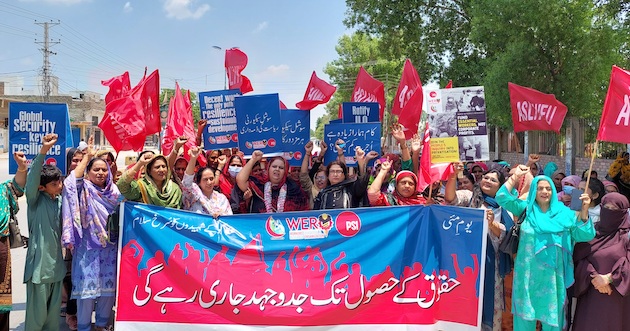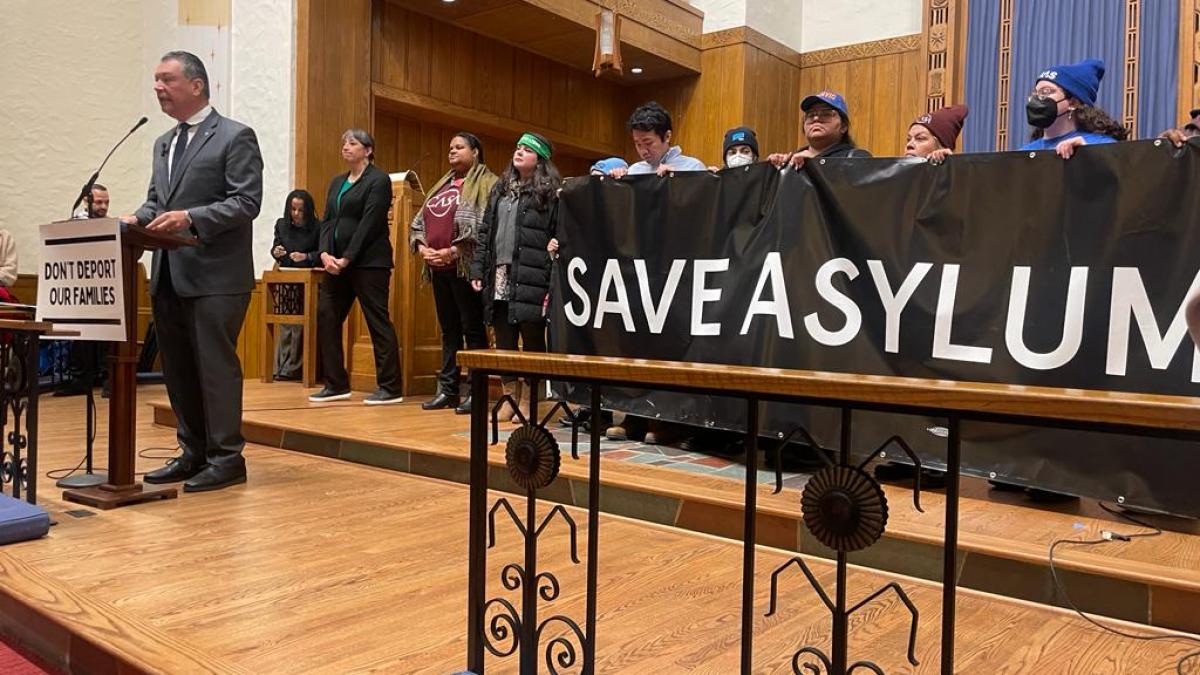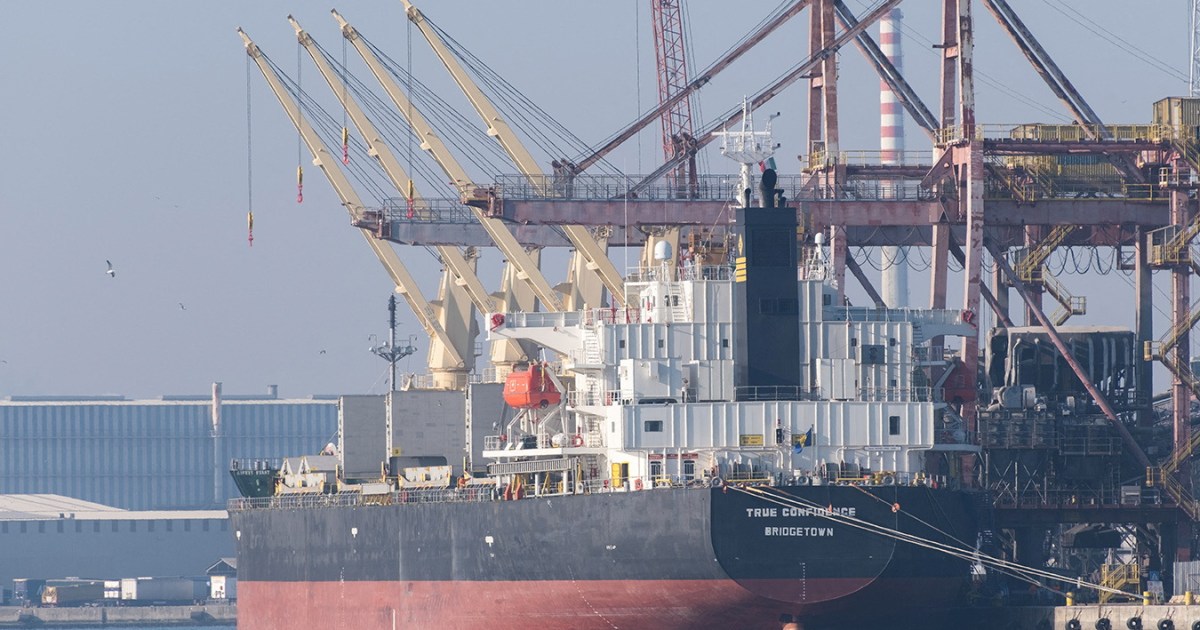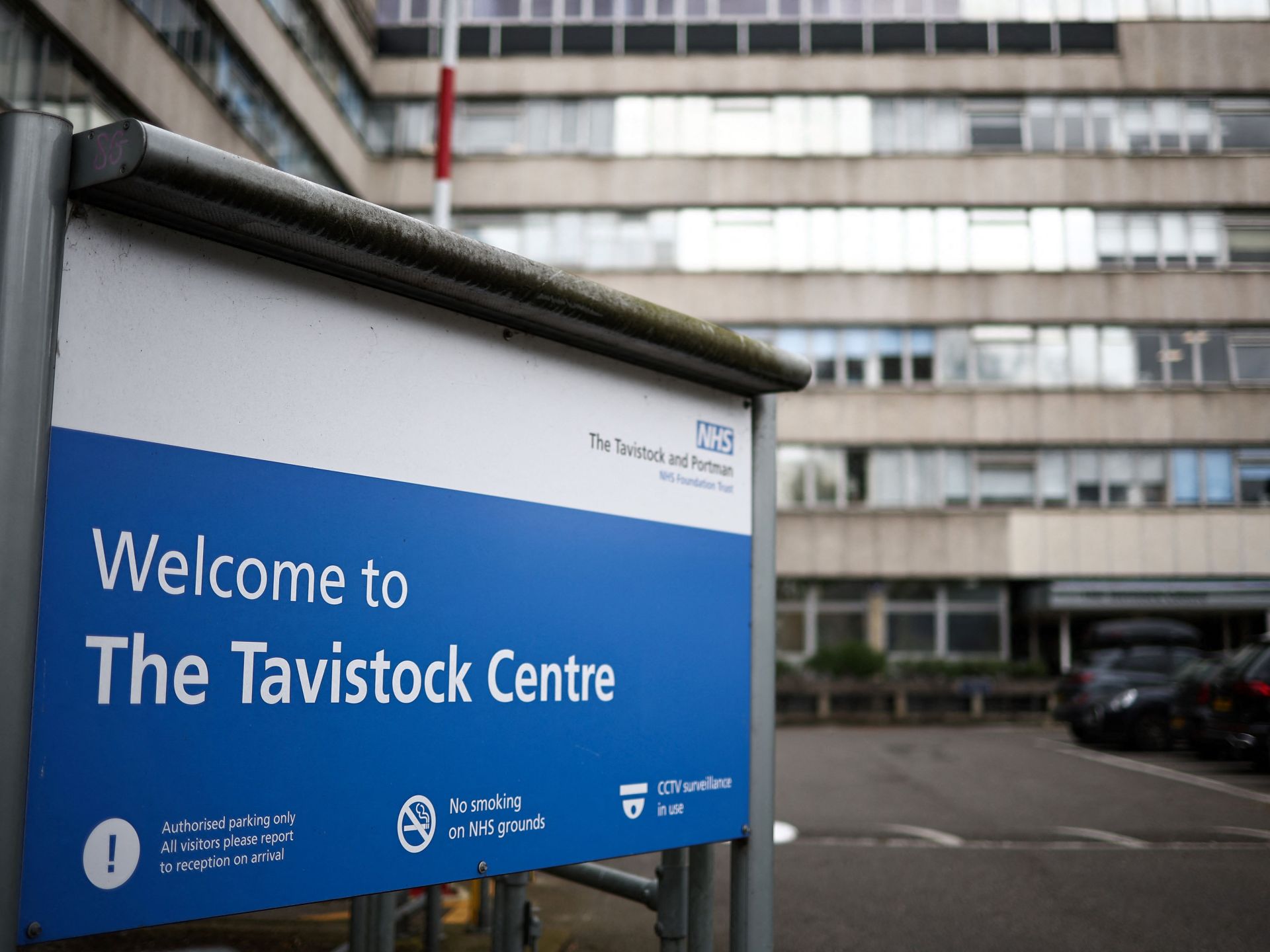South Asian Community Health Workers Say Their Work is Work — Global Issues
KARACHI, Oct 19 (IPS) – “Professionally, I am still where I was 23 years ago when I started working as a lady health worker (LHW),” said a disgruntled Yasmin Siddiq, 47, from Karachi. “I will probably retire in the same capacity, as a Grade 5 government servant, without any hope for upward mobility.”
The idea behind the Lady Health Worker Programme (LHWP), the brainchild of Pakistan’s late prime minister Benazir Bhutto, began in 1994 with the purpose of “training women as community health workers (CHWs) to improve the dismal maternal and child health scores of the country and build a bridge between the village woman and the formal health sector,” said Dr Talat Rizvi, a public health physician with a vast experience in Maternal and Child Health with a particular focus on community-based projects and who designed the programme.
Siddiqi’s day starts at 9 am, and she must go door-to-door, covering between 5 to 10 homes within the 1 km radius of her home. “Initially, my tasks included making married women (of reproductive age) aware of the benefits of family planning and informing and providing them assistance about contraceptives, ensuring they go for antenatal check-ups when pregnant and their tetanus shots. I had to keep an eye on under-five children of that family and get them vaccinated,” she said. Over the years, her workload has expanded.
“We were asked to help fight TB, handle refusals by parents on administration of polio drops, ensure every child under five gets immunised against childhood diseases, which have now increased to 12 vaccines, and recently during the COVID-19 pandemic, we helped with vaccinations,” said Bushra Bano Arain, chairperson of All Pakistan Lady Health Workers Union. “And as if health is not enough, we are asked to carry out our duties on election day,” disclosed Arain, an LHW supervisor.
“Over the years, the focus got diluted from primary healthcare when more and more responsibilities were added to the LHWP’s boat, and the boat sank,” said Rizvi.
“The original programme of ensuring the health of mother and child took a backseat,” agreed Dr Shershah Syed, a gynaecologist and obstetrician. “LHW was perhaps started with good intention but had become a politicised entity with many women recruited by MPAs and MNAs as ghost workers, in the Sindh province especially,” he added.
The situation is no better for the over a million Accredited Social Health Activists (ASHAs) in India or the 52,000 Female Community Health Volunteers (FCHVs) of Nepal, who have, over the years, been lumped with more and more tasks, according to Public Services International, a global trade union federation, which helped the women CHWs in Pakistan, Nepal and India come up with a Charter of Demands to “address injustices and advocate for better working conditions”.
According to Jeni Jain Thapa, PSI’s project organiser in Nepa, the FCHVs “have no fixed working hours and must be on standby 24/7”.
The same is the case with the LHWs, said Musarrat Basharat, an LHW and the general secretary of the Punjab LHW’s Union. “Whatever time of the day or night it is, we must accompany a woman in labour to the health centre and be with her till she delivers. Same with a sick child. If the baby has diarrhoea and is dehydrated, we must rehydrate and be with the family for six hours until the child is out of danger. We are not shirking from our duty, but at least pay us for overtime or make some provision for it,” she said.
However, of the CHWs in the three countries, over 100,000 LHWs have won significant gains in getting themselves recognised as workers, securing a wage and registering their unions, Kannan Raman, secretary PSI, South Asia: “In Nepal and India, they are considered volunteers and not offered decent wages or better working conditions.”
“It took us 20 years to get ourselves noticed when the Supreme Court of Pakistan asked the government to bring us into the fold of formal work and make us permanent employees in 2014,” said Haleema Leghari, central president of All Sindh Lady Health Workers and Employees Union, working as a supervisor in the LHW programme.
But even after nine years, they continue working without a job structure or rules that go with that. “We rejected the service structure made for us as it was found to be discriminatory,” said Leghari, adding: “Recognition from the government is mere lip service.”
Even for those who started in 1994, like Arain and Leghari, who have become supervisors, their grades have been marginally improved from Grade 5 (which is for LHWs) to Grade 7 (which is for the supervisor). “While in other sections of the health departments, those who have worked as many years as us and are as educated as us have reached Grade 14; why have we not been upgraded?” Arain asked.
Although their salary was increased by 35 percent in June, Leghari said: “We do not want these ad-hoc increments; we want promotions like other government servants are promoted based on work performance, education and years of service, as these impromptu increments can also be taken back anytime.”
In addition, she said that those who have retired after attaining 60 years of age, are sick, or have died should be compensated. They or their families should be paid the pension in arrears,” she added. Today, the LHWs want the 20 years of contract work to be accounted for, which they say “everyone seems to have forgotten”.
According to Leghari, in other government departments, when an employee retires or meets with an accident, is sick or dies, a family member gets the job in that department. “We are missing out on these benefits because the rules have not been approved in the absence of a service structure,” she said.
“Their main demand is fool-proof security,” said Mir Zulfiqar Ali, executive director of Workers Education and Research Organisation. “You know so many LHWs have been killed by extremists,” he said. His organisation is working with the LHWs and training them about labour rights, health protection especially during crises and pandemics, and workplace safety and how to lobby effectively with the government to get their demands accepted, coordinating the PSI CHW project in Pakistan.
Siddiqi’s monthly payment is now Rs 44,000 from Rs 37,000 since June, but given the skyrocketing food, electricity and fuel prices, she said this was certainly not enough for a single mother with two school and college-going kids.
“The provincial health departments have time to meet all the international NGOs and donor agencies, but for holding a meeting to address our grievances, they can never find time,” said Arain.
“The invaluable work community health workers do work that has delivered immeasurable value to communities and public health, is not valued, simply because it is carried out by women, and women’s care work is routinely de-valued, even when it saves lives”, explained Kate Lappin, the Asia Pacific regional secretary for PSI.
With new climate catastrophes imminent, Lappin said Pakistan will need the services of LHWs even more, as was proved during the pandemic and the 2022 floods that disrupted the already fragile health system. “They are the first line of defence in a crisis.” She was in Pakistan recently and met with LHWs from some remote parts of Pakistan. “It was clear that they are often the only source of support to women in the most underserviced areas.”
IPS UN Bureau Report
Follow @IPSNewsUNBureau
Follow IPS News UN Bureau on Instagram
© Inter Press Service (2023) — All Rights ReservedOriginal source: Inter Press Service
Check out our Latest News and Follow us at Facebook
Original Source







